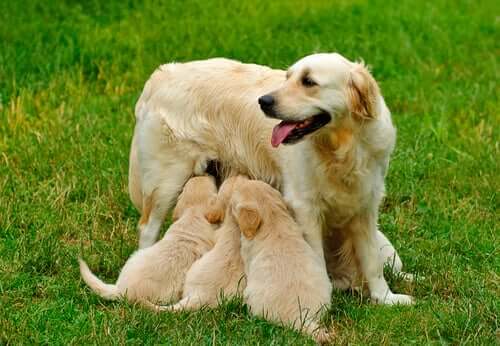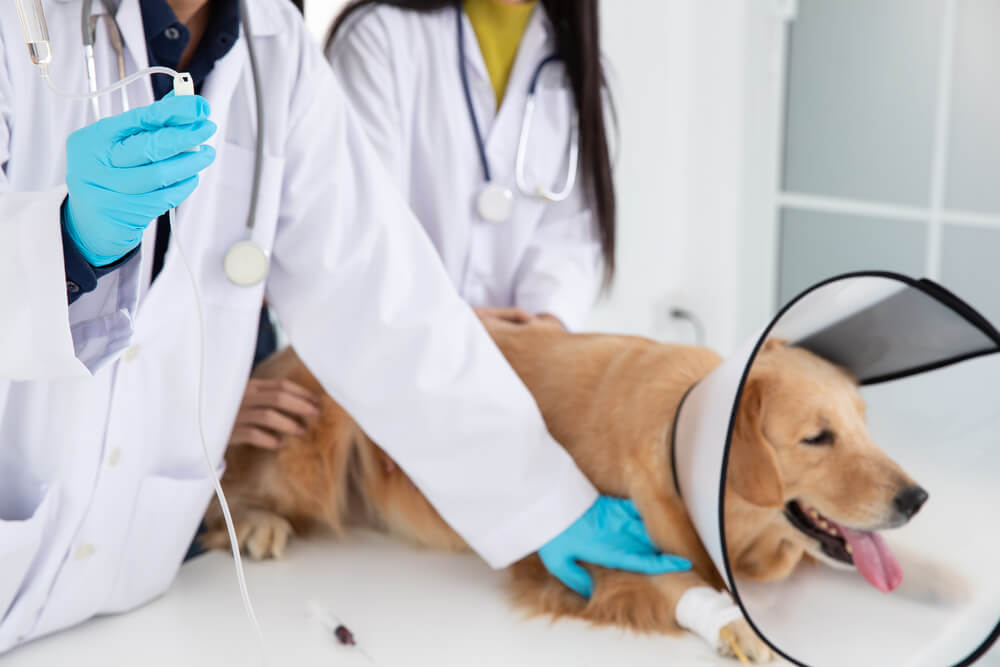Vaginal Cytology in Dogs: Description and Procedure

Vaginal cytology is a simple and effective method that allows experts to evaluate the cells of the vaginal epithelium. Its importance has been growing over time in veterinary medicine as a low-cost and simple technique that allows for fast and complete results.
What is vaginal cytology is used for?
Vaginal cytology or vaginal swab is the most used procedure to check the conditions of the dog’s reproductive system. Despite being an old practice, vets prefer it, because it’s practical, fast, economical, and has a remarkable scope.
As a preventive study, it’s often performed to rule out any hormonal variations and ensure the good health of epithelial cells. It is also effective for analyzing the estral cycle or of sexually active female dogs or cats.

By the use of diagnosis, vaginal cytology performed in dogs allows detecting inflammations, infections, and neoplasms in their reproductive tract. Its effectiveness may be compared to a blood progesterone test.
Vaginal cytology, often used in tandem with hormone analysis, can also provide valuable information about the stage of the ovarian cycle.
Vaginal cytology for dogs: Procedure
Generally, vaginal cytology is easy to perform in dogs and can be carried out by any specialized veterinary professional. In addition, this is just one of its most notable advantages compared to more sophisticated or complex techniques.
The study involves introducing a clean swab – preferably sterilized – into the female dog’s vagina. You have to be very careful to properly place the swab towards the dorsal or causal region of the vagina, avoiding touching its central area.
Many professionals prefer to moisten the swab in a saline solution. As a result, this will promote cellular adhesion and can reduce the animal’s discomfort.
When reaching the right spot and gently applying the swab, the professional should palpate the region and remove the swab. Then, it will be necessary to roll the same swab on the previously prepared sheet.

Subsequently, the epithelial cells should be analyzed under a microscope to find out the state of the dog’s reproductive system.
Vaginal epithelium cells
If the professional applies the procedure properly, vaginal cytology should allow them to observe and evaluate the following cells contained in the vaginal epithelium:
- Parabasal cells: Their shape is round, with uniform sizes, and they stand out for having a large core. They are present in large numbers in female dogs that haven’t reached puberty yet but are also present during the diestrus and anestrus phases of the monoestrous cycle.
The professional should be able to differentiate them from neoplastic cells to avoid a false diagnosis.
- Intermediate cells: These are larger, actually almost double the size of the parabasal cells. These stand out by having an increase in the cytoplasm, but not in the nucleus. In this case, the typical parabasal “great core” disappears. When the female dog reaches the estral period, the cytoplasm of the intermediate cells usually shows pale shades of a grayish-blue color.
- Surface cells: These are large cells, with a small nucleus and abundant cytoplasm where irregularities stand out. When the female dog reaches an advanced age, surface cells stand out by the absence of a nucleus.
- Basal cells: These cells are very small and uniform in shape, with an almost round form and a small amount of cytoplasm. Veterinarians know these as the precursors of parabasal cells, which mark the estrous cycle or period in female dogs. However, veterinarians can rarely observe them with vaginal cytology.
The reproductive cycle and its cytological stages
During their lifetime, female dogs experience several stages of their reproductive cycle:
These are Proestrus, Estrus, Diestrus and Anestrus. The strips obtained from vaginal cytology allow us to find out these different phases and detect any abnormalities.

- Proestrus: This phase is characterized by follicular maturation and increased levels of estradiol in the blood. This generates a cytological image rich in parabasal and intermediate cells, but poor in superficial cells. In addition, some erythrocytes or neutrophils may also be present. Normally, the background of this image should have a very dim shade of blue.
- Estrus: If the female dog has reached this phase in her cycle, the cytological image should contain 90% to 100% of superficial cells. The presence of neutrophils in the foil usually indicates inflammation of the epithelium.
- Diestrus: During this period, a decrease in surface cells is present. The ‘ideal’ cytological image will contain between 50% and 60% of surface cells, and another 40% or 50% of parabasal and intermediate cells. In this case, neutrophils and erythrocytes may reappear.
- Anestrus: Its cytological image shows an abundance of parabasal and intermediate cells. Most often, bacteria and some neutrophils are present. Moreover, as the female dog reaches an advanced or senior age, vaginal cytology will reveal sparse superficial cells with no nucleus.
Veterinarians are increasingly in need to provide services supporting canine reproduction. This is due to the popularity of dog breeding worldwide. As a result, this procedure is very useful and practical in order to determine the dog’s reproductive health.
We hope you enjoyed learning about this particular practice today. See you next time!
